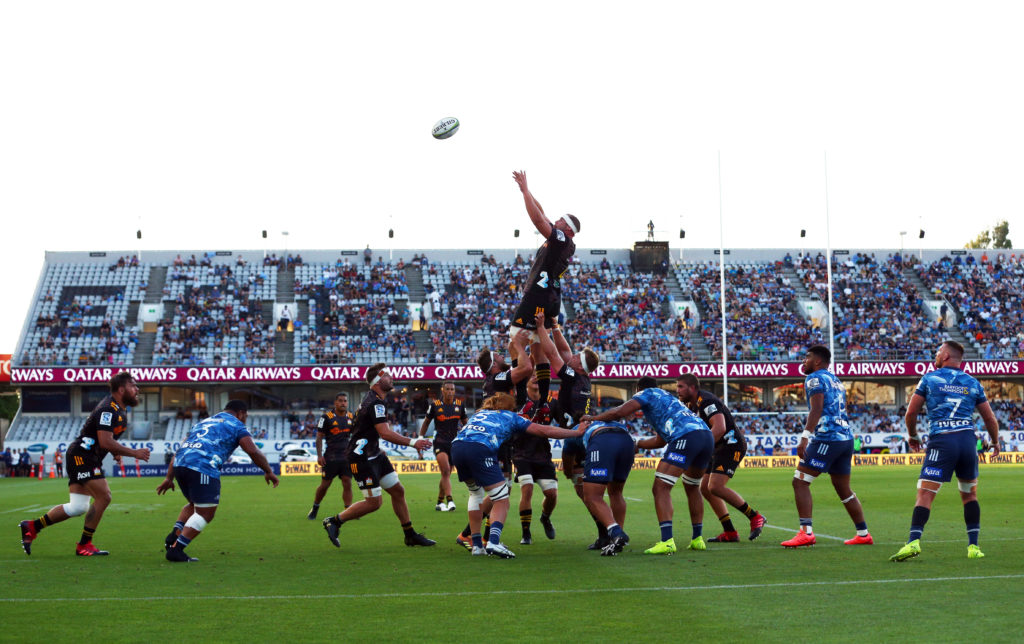Super Rugby is still fighting to regain what it lost following the decision to expand the number of teams and stage the tournament across four continents, writes JON CARDINELLI.
Remember the early days of the Super 12? Remember when the tournament lived up to its name and first-choice Test stars from Australia, New Zealand and South Africa collided on a regular basis?
Jonah Lomu, Christian Cullen, Joost van der Westhuizen and Stephen Larkham were among those who dazzled us with their game-breaking touches week after week. Forwards were encouraged to run and handle like backs in a breakneck contest watched by thousands around the world.
Those were the days of the round-robin format, when each team was pitted against every other side en route to the playoffs. The travel aspect added to the challenge, with the tournament being staged across two continents.
The game itself has evolved over the past 25 years. The players are now bigger, faster and stronger – and the ball-in-play time is greater than ever before. Nowadays, it’s not uncommon to see front-rankers throwing tip-passes from the first-receiver position or centres and wings cleaning at the rucks in the outside channels.
Why then do so many of us yearn for the good old days of Super Rugby?
The truth of the matter is that the competition has been diluted over the past decade or so. Many top players have opted to take up lucrative contracts at northern hemisphere clubs. Changes to the format and the inclusion of teams based in Argentina and Asia have compromised the final product.
After expanding to feature 15 teams in 2011 and then 18 teams in 2016, Sanzaar realised its mistake and cut the roster to 15 in 2018. The tournament will be further reduced from 15 to 14 teams next season. It wouldn’t surprise to see another reduction in future as Super Rugby returns to a 12-team structure.
Can Sanzaar get the fans back to the stadiums? Many took to social media to celebrate the 25th anniversary of a once great tournament on Friday. The turnout for the opening game between the Blues and Chiefs at Eden Park was disappointing, though, as was the crowd that watched the Brumbies tackle the Reds in Australia.
Going by the decline in attendance at South African grounds over the past few years, one would expect the stands at Kings Park and Newlands to be sparsely populated this weekend. Super Rugby doesn’t captivate as it once did.
The anniversary does get one thinking about the future of the competition in the long term. Will the Super Rugby tournament still exist in 2045, another 25 years down the line? Will it be better or worse than it is now?
Sanzaar needs to realise that less is more in terms of matches. It needs to address the playoff structure – a six-team final series in a 14-side tournament from 2021 onwards is madness – and look to alleviate the challenges associated with long-distance travel.
The organisation could also do more to sell and promote the game. Right now, the local media has limited access to teams visiting from out of town and overseas. As is the case at the World Cup, teams should be mandated to roll out players and coaches on a daily basis.
It will be interesting to see how long South Africa remains part of the Sanzaar alliance. For some time, there have been rumours about one or two of the big franchises joining a competition in the northern hemisphere.
The Cheetahs and Kings were included in an expanded Pro14 after they were relegated from Super Rugby at the end of 2017. How long will it be before the Sharks or Bulls follow suit?
The current Super Rugby tournament produces some outstanding rugby at times. It’s great to see so many youngsters getting an opportunity to play regularly and stake their claim for higher honours.
That said, there’s no getting round the fact that the competition is not as strong as it once was and that the European club tournaments have overtaken the southern showpiece in so many respects.
Photo: Renee McKay/Getty Images





